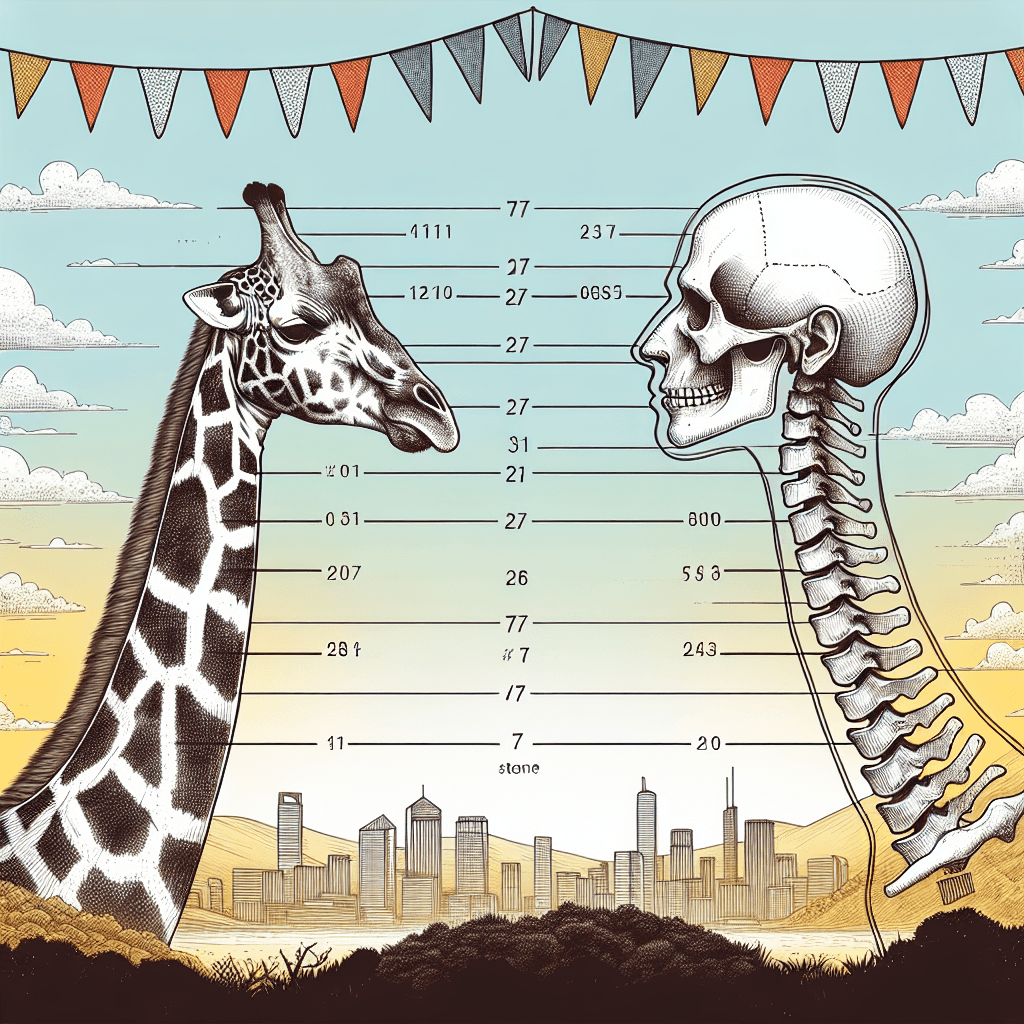Why do giraffes have the same number of neck bones as humans
It may seem impossible, but a giraffe's towering, two-meter neck contains the exact same number of bones as your own—and the secret lies in a brilliant and bizarre feat of evolutionary engineering.


Too Long; Didn't Read
TLDR: Both giraffes and humans inherited seven neck bones from a common mammal ancestor. Giraffes just have super-long versions of those bones because changing the number is genetically risky and linked to cancer and birth defects.
Nature's Skyscrapers: Why Do Giraffes Have the Same Number of Neck Bones as Humans?
Gaze up at a giraffe, and its most defining feature is impossible to miss: a neck that can stretch over six feet long, a biological marvel that allows it to browse treetops far beyond the reach of other animals. Now, look in a mirror and consider your own comparatively short neck. What if I told you that, despite the massive difference in length, you and that giraffe have the exact same number of neck bones? It’s one of nature’s most surprising and elegant truths. This isn't a random coincidence but a profound clue into our shared evolutionary history. This post will unravel the mystery of why these two vastly different creatures share the same cervical architecture, exploring the anatomy, genetics, and evolutionary pressures that led to this remarkable outcome.
The Universal Mammalian Neck Plan
The answer to this biological riddle lies in a highly conserved trait shared across the vast majority of the mammalian class. From the tiniest pygmy shrew to the colossal blue whale, and from humans to giraffes, nearly every mammal is built with exactly seven cervical vertebrae—the technical term for neck bones.
This "magic number seven" is a fundamental part of the mammalian body plan. It's a testament to a common ancestor from which most mammals evolved. While there are a couple of rare exceptions—sloths and manatees being the most notable—the consistency of this trait across thousands of species is staggering. It suggests that deviating from this seven-vertebrae plan comes at a significant evolutionary cost, forcing nature to find other ways to achieve different neck lengths.
Size Matters: The Key to a Long Neck
If the number of bones isn't the reason for a giraffe's long neck, what is? The secret lies not in the quantity of the vertebrae, but in their quality—specifically, their size.
While a human’s cervical vertebrae are small, each measuring only an inch or two in height, a giraffe’s are colossal. Each of its seven neck bones can be over 10 inches (25 centimeters) long. Imagine a necklace made of seven tiny beads versus one made of seven massive, elongated cylinders. Both have the same number of pieces, but their total length is dramatically different. That is precisely the strategy evolution employed for the giraffe. Instead of adding more bones, which would require a fundamental rewrite of the mammalian developmental blueprint, natural selection favored the elongation of the existing seven vertebrae.
Why Stick to Seven? The Evolutionary Trade-Offs
This leads to the ultimate question: why is the number seven so rigid? Why not just add a few more vertebrae to create a longer neck? The answer is rooted in deep genetic constraints and the serious risks associated with changing the plan.
The Genetic Constraint
The development of the vertebrate skeleton is orchestrated by a powerful group of master-control genes called Hox genes. These genes act like a master architect, laying out the body plan from head to tail during embryonic development. They dictate where the head, thorax (chest), and lumbar (lower back) regions will form.
- Developmental Link: Critically, the genes that control the number of neck vertebrae are also intricately linked to the development of other vital body parts, including the heart and lungs.
- The High Cost of Change: Scientific studies have revealed that mammals born with a different number of cervical vertebrae have a dramatically higher risk of stillbirth, neonatal death, and even a higher incidence of childhood cancers. This phenomenon, where one gene influences multiple unrelated traits, is known as pleiotropy.
Because of this genetic linkage, any mutation that changes the number of neck bones is highly likely to cause lethal side effects. It’s a classic evolutionary trade-off: it's far safer and more effective to modify the size and shape of existing structures than it is to alter the fundamental, high-stakes blueprint.
Conclusion
The fact that you share your neck's bone count with a giraffe is a powerful reminder of our shared place in the animal kingdom. It's a story of evolutionary efficiency and constraint. Rather than reinventing the wheel (or in this case, the neck), evolution worked with the materials it had, stretching and sculpting the seven standard mammalian vertebrae to create the giraffe's iconic silhouette. This biological fun-fact is more than just trivia; it’s a window into the deep, genetic rules that govern the development of all mammals. So, the next time you see a giraffe, you can appreciate not just its incredible height, but the elegant and ancient evolutionary path that connects its towering neck to your own.


